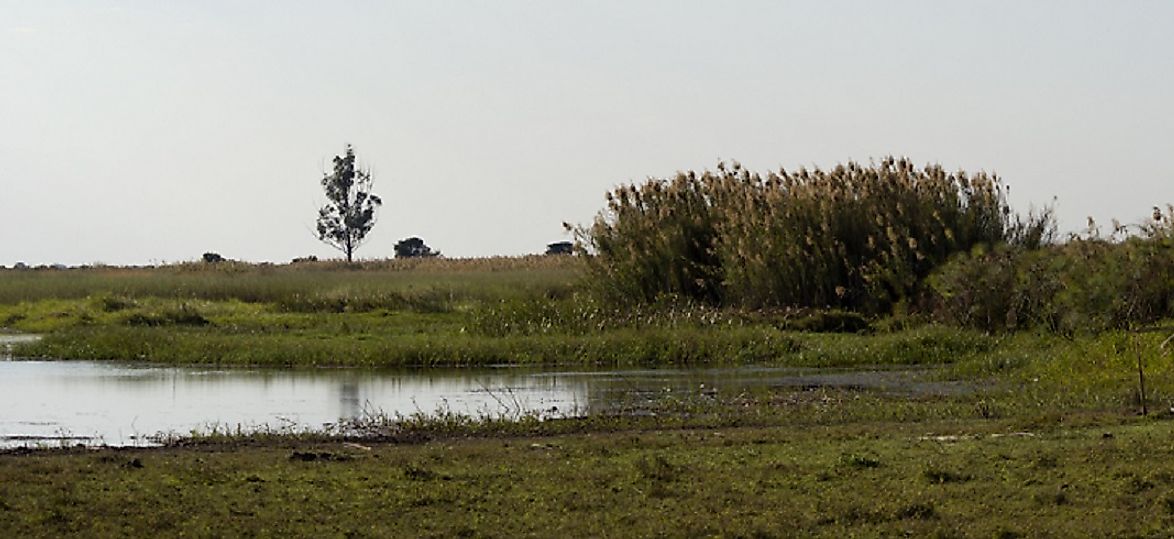The Chambezi River

5. Description
The Chambezi, or Chambeshi, courses for around 300 miles through the African nation of Zambia. The Chambezi starts out as a small stream in the northern mountains of Zambia, and flows down into the Bangweulu swamps, which are also connected to Lake Bangweulu. The river then rushes into the southeast flood plains that are part of the Bangweulu Wetlands ecosystem. From there, it then flows to the Luapula River with enormous speed through the marsh canals east of Kasama as it courses onward towards the Atlantic ocean. The Chambezi River is considered the ninth longest river in the world. Even large river steamboats can navigate its course without difficulty.
4. Historical Role
Not only is the Chambezi River the ninth longest river in the world, but it has the deepest depths for any river in the world. Its deepest sections reach down to 720 feet, and it flows through 10 different African countries. It is comparable to the Amazon River in South America in that the Chambezi also has a rainforest which it inundates during the rainy season. Ancient kingdoms in the Congo nations have lived in the mouth of the river and utilized its resources for centuries for their livelihoods. Like the Amazon River, the Chambezi also acts as a central route for a massive drainage drainage basin that is formed in part from other, smaller rivers that flow through Western and Central African countries.
3. Modern Significance
West African nations have put up hydroelectric dams along the Chambezi River to help augment their energy needs. The rainy season brings enough waterflow to the river that it could essentially provide the electricity needs of the sub-Saharan region easily with additional infrastructure. Such developments will prospectively improve the standards of living in these countries, and also allow for more work hours (due to increased indoor electrical lighting) to augment the region's economy. The area around the Chambezi is settled by fishermen, farmers, and hunters along its banks, who source the river for their respective livelihoods. The annual flooding allows the river flow to disperse its waters into lagoons that form part of the Luapula River. This in turn nourishes the floodplains and canals of Zambia, which support a rich biodiversity of wildlife.
2. Habitat
The Chambeshi River holds a varied habitat for its flora and fauna, all the way from its stream-like beginnings high up in the mountains of Zambia to the tropical and sub-tropical floodplains and wetlands where the river is much larger. The river's underlying substrate is mostly granite, while some areas are instead sandy underneath. Alluvial deposits, sandstones, quartzites, shales, and mineral conglomerates also are found in various parts of the Chambezi's riverbeds. Lake Bangweulu has shrunk to its present day size and shallow depth, and has a cratonic platform underneath its waters, while sandy bottoms dominate its western shorelines. Terrestrial habitats in the Chambezi River Basin are inclusive of floodplains, swampy areas, and grasslands, wherein antelopes, goats, cattle, gazelles, and sheep graze. Swampy lakes and floodplains are occupied by endemic fish and semi-aquatic vegetation.
1. Threats and Disputes
The Wildlife and Environmental Conservation of Zambia was started in 1953 to alert the people of Zambia in regards to the need for protecting wildlife through education and conservation. It has many ongoing activities, among which some of the most notable are tree planting projects, the Wetlands Strategy and Action Plan, and the promotion of ecotourism. Originally, the non-governmental organization started as a game and hunting preservation association, but later turned its efforts to environmental habitat and wildlife protection. One of its first projects was the Operation Noah, initiated during the construction of Lake Kariba, which rescued many animals from the rising waters of the lake. It also supports numerous research projects, and enables monitoring of the many environmental programs, and ecological problems and successes, in Zambia.











